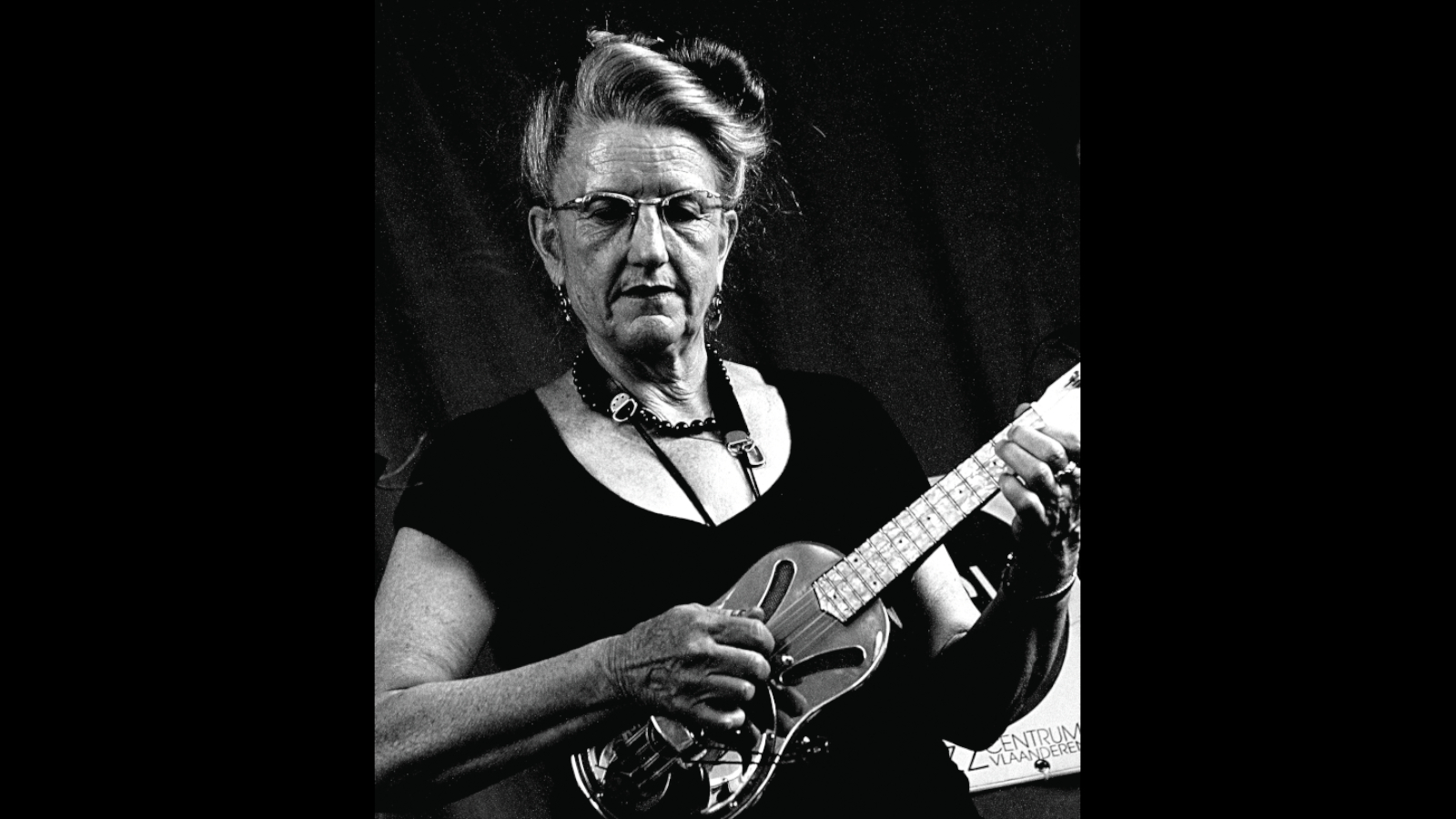“How can you make a cult figure of Robert Johnson, who recorded 30 Sides, and ignore Memphis Minnie, who recorded 200?” Del Rey speaks up about female guitar History

When I began interviewing women guitarists in 2001, Del Rey topped my list of players to speak with.
Born Della Rey, she grew up in San Diego and started playing guitar at age four. By the time she hit her teens, Del had already discovered pre-war blues and been mentored by Mississippi blues legend Sam Chatmon.
Over the decades she has become adept in many blues guitar styles and in advanced ukulele technique.
Del is also one of the foremost experts on the history of women and guitar. When not touring or teaching, she conducts lectures on Women in American Music and Women with Guitar.
You started playing guitar at the age of four. Do you have any recollection of it?
Yes, I have a pretty good memory from even before that, but I really started to play seriously when I was introduced to the music of Memphis Minnie and when I met Sam Chatmon at 13.
I had been introduced to these Memphis Minnie Blues Classics volumes 1 and 2 [released in 1964 and 1967, respectively, on the Blues Classics label]. I had been listening to those and learning songs by ear, so when I saw Sam, I noticed he played in a style that had a lot in common with Memphis Minnie’s. It was that down-home, song-oriented style, rather than the heavy Delta style.
All the latest guitar news, interviews, lessons, reviews, deals and more, direct to your inbox!
Women were either actively discouraged from performing or had to consciously overcome so many boundaries that made it harder for them
Del Rey
Why do you think there haven’t been more women guitarists?
I think there’s a ton of them that people just ignore, like Mary Osborne [active in jazz from the mid 1930s until her death in 1992]. Who knows about her? And she’s a great guitar player. You go through the history of jazz and her name never comes up.
Women were either actively discouraged from performing or had to consciously overcome so many boundaries that made it harder for them.
Vahdah Olcott-Bickford, the founder of the American Guitar Society, was also a very influential performer. She published, like, 140 reference books. There were two Martin guitars named after her. She was very well known, all through the 1920s and ’30’s.
The history of jazz guitar should include Mary Osborne. A history of guitar in general should include Vahdah Olcott-Bickford. She is about as statured in that music as Memphis Minnie is in blues.
Girls today are so much more informed than girls of our generation, or our mothers’
Del Rey
I mean, how can you make a cult figure of Robert Johnson, who recorded 30 sides, and ignore Memphis Minnie, who recorded 200? Get over it already!
The more I know about the 1920s and ’30s, the more informed I am about what’s going on now. That’s what I like about it. When I was a little girl, I didn’t know there were any other women guitar players, but my students now know about them. Girls today are so much more informed than girls of our generation, or our mothers’.
Do you find that there are more female guitarists now?
I think there’s an onset of everything female. Girls are just empowered to do whatever they want to do now. If they want to go out and get a job, they do that.
If they want to be an artist of whatever kind, they can find a place to be that.
It’s a good thing.
Browse Del Rey’s extensive catalog at Hobemian Records here.
Visit Del Rey’s website here.
For more information about Sue Foley, visit suefoley.com.



